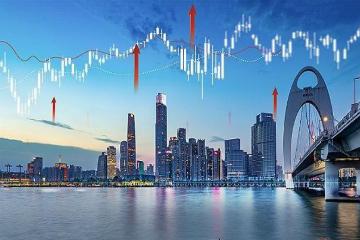In the world of Chinese real estate, the name Sunac may not ring as familiar as Evergrande or Country Garden, yet it undeniably stands as a formidable player among the giants in the industryThis private real estate enterprise, founded by the visionary Sun Hongbin, once experienced remarkable success, achieving annual sales figures nearing 600 billion yuan and securing the fifth position among the top 100 real estate firms in China.
However, the latter half of 2021 marked a tumultuous turn for the real estate market in China, enveloping Sunac in the same storm of debt crisis that afflicted many of its counterparts.
In May 2022, Sunac publicly declared its inability to meet interest payments on four dollar-denominated bonds, indicating a grave default on its debtsFortunately, Sun Hongbin acted rapidlyEmploying measures such as asset divestiture for "self-rescue," the company entered into a debt restructuring agreement in November 2023 with overseas creditors, which involved the issuance of new bonds and convertible bonds, as well as offsets against shares of Sunac Services, a subsidiary.
According to the announcement made by Sunac at that time, the overseas debt restructuring plan encompassed a total of $10.2 billion in liabilities
Advertisements
Hopes surged that this restructuring would mark a turning point, allowing the company to bounce backYet, reality struck hard.
On January 7, 2025, an exclusive report surfaced from The Paper, revealing that Sunac might fail to honor its payments scheduled for September 2025. The firm was in the process of contemplating alternative solutions, with plans to unveil a new proposal by early March.
In layman’s terms, this meant that the repayment plan established in November 2023 had become obsolete, prompting Sunac to initiate a secondary debt restructuring process.
The very essence of debt restructuring lies in the inability to repay; creditors often agree to such arrangements due to a lack of better alternativesShould the company resort to bankruptcy proceedings, there would be scant funds remaining for creditors after covering bankruptcy costs, employee wages, social insurance, and taxes
Advertisements
Invariably, creditors might expect to recover less than 10% of their principalFor example, if an investor holds a $1 million bond, they may see less than $100,000 returned following bankruptcy.
To maximize their recoveries, creditors have little choice but to accept new repayment proposals from SunacThey cling to the hope that if the real estate market in China stabilizes, Sunac's fortunes may revive and they could potentially reclaim their principal and interest, which would be a preferable outcome compared to the bleak returns following a bankruptcy.
Despite such optimism, there is often a chasm between hope and realityThe initial debt restructuring agreement from November 2023 did not bring about any fundamental changes in Sunac’s situation after a yearFinancial reports evince that in the first six months of 2024, Sunac suffered accumulated losses of 14.96 billion yuan, a mere 2.7% reduction from the previous year
Advertisements
As of now, the company’s debt ratio had escalated to 93.1%, which was even higher than the end of 2023.
While Sunac had yet to release its financial data for the latter half of 2024, it is reasonable to expect similarly dismal results, making it unsurprising for the company to seek a secondary round of debt restructuring.
The principal reason behind the difficulty in implementing the first restructuring plan is, fundamentally, the inability to sell properties.
Recent operational data for 2024 revealed that Sunac posted a total contract sales figure of merely 47.14 billion yuan, a staggering 44% decline year-on-yearThis figure represented a mere 7.9% of the peak sales recorded in 2021, falling drastically short of the 597.36 billion yuan achieved during that period.
Paying debts requires cash, and poor sales figures translate to dwindling cash flow for Sunac
- US Stocks Decline Across Key Sectors
- AI, Innovation Fuel Industrial Revival
- Nvidia on Quantum Computing: A Misunderstanding?
- Can Digital RMB End the Dollar's Dominance?
- Major Indices Mixed as Volume Dips Below 500B
By June 30, 2024, the company’s cash and cash equivalents totaled only 5.4 billion yuan, reflecting a reduction of one-fourth of what it held in 2023 and a shocking one-twentieth of its peak reserves.
Simultaneously, the "inventory" category in Sunac's financial reports soared to 558.9 billion yuanThis "inventory" fundamentally consists of properties that have been completed but remain unsoldIf these 558.9 billion yuan worth of properties could be sold, it wouldn’t just help in addressing the overseas debt; it would substantially alleviate Sunac’s cash flow crisis.
Unfortunately, as we reflect on the state of the Chinese real estate market in 2024, aside from sporadic signs of stabilization in key urban centers during the fourth quarter, most regions still languish in relative despondency, and prospects for immediate recovery appear bleak.
As we look towards 2025, questions loom large: Will the real estate market stop its decline? Can sales figures rebound? If the situation remains stagnant, Sunac will not be the only enterprise seeking to revisit and revise its debt restructuring strategies

Leave A Reply